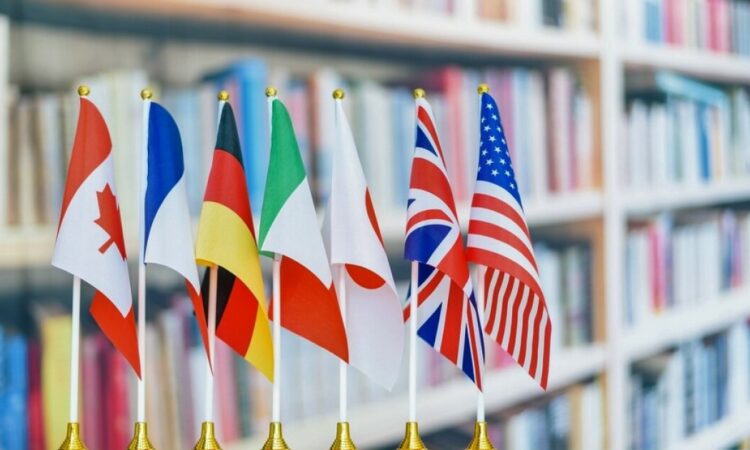
The G7 oil price cap is working, but the US is open to changing the parameters of the revolutionary initiative, including raising the $60 per barrel cap level, said a senior US Treasury official.
“We feel very good where we are,” Eric Van Nostrand, assistant secretary of the treasury for economic policy, told S&P Global’s Appec conference in Singapore.
Van Nostrand pointed to the the relative stability of global crude and product markets alongside the dramatic decreases in Russia’s oil-linked revenues as proof that the price cap was fulfilling its twin goals.
The claims come despite growing concerns that the G7 may not be able to actively police trades amid growing indications that cargoes of Russia’s benchmark Urals grade are now frequently trading above cap levels.
Brent oil prices breached $90/bbl Monday and Energy Intelligence believes seaborne Urals was trading at a discount of less than $15 on average, putting prices in the range of $75/bbl.
The dynamic has left some wondering whether the US would rather raise the price rather than have to strictly enforce the cap.
Van Nostrand said the US would be open to changes in the details of the cap, including changing the $60 price level but would not lead the effort.
“That level is the output of a lengthy diplomatic process so the United States by itself is not going to say we think it should be higher or lower,” he said. “But I can tell you that the coalition generally continues to watch market conditions closely.”
The prices for both products and diesel are set through amendments to European Union sanctions and must be passed unanimously by all 27 member states.
EU members have generally been loathe to reopen those negotiations. EU officials told Energy Intelligence that they could discuss such revisions in the fall but admitted there were no such consultations as prices rose through the summer.
Russian Crude Trade
How much Russian crude actually trades under the price cap is an open debate.
Before the cap, more than 90% of Russian oil used Western ships, insurance or trade finance, but Van Nostrand admitted more oil was trading outside the cap constrictions.
Frederic Lasserre, global head of research at commodities giant Gunvor, put the figure at between 45% and 50% based on conversations with the group’s large staff of traders and logistics experts.
Energy Intelligence estimates that perhaps a third of Russian seaborne volumes are traded under the cap.
There is little evidence that US and UK sanctions officials are strictly enforcing the cap or investigating claims of falsified documents, said one trader working out of the Dubai Multi Commodities Center (DMCC).
Dubai is one of a growing number of hubs for trading Russian crude and products in the Middle East, but the specter of enforcement actions, which can sometimes take years to materialize, was still a major deterrent.
One head of an Indian refinery that bought Russian volumes told Energy Intelligence they would only transact in compliance with the cap for fear of any sanctions repercussions.
Long-Term Impact
The DMCC trader said the pull out of Western banks from trade finance made it difficult for companies to manage the risks of handling Russian volumes.
This meant either paying higher prices for non-Western finance or taking on the full financial risk of the transaction, something few outside a number of small upstart traders of murky origins were willing to do.
Russell Hardy, CEO of trader Vitol, warned that these traders, and by extension the price cap, could undermine Western political interests in the long-term, even if it seemed to be doing its job today.
“The flipside of it is that it’s creating stronger bonds between Brics countries, which in turn is an opposite force, a polar opposite, to Western politics and Western approaches to these points, so that’s a negative aspect,” Hardy said. “So we do worry about how that takes shape over the next year or two, as these Russian traders get the opportunity to forge these bonds between Russian energy supply and the Brics countries particularly around Asia-Pacific.”






